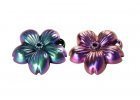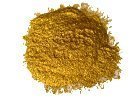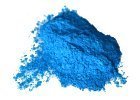Pigments powders
Product sorting
5 items total
List of products
Listing controls
5 items total
How to work with powder pigments
- Mix the pigment into the already mixed clear resin (A+B) and stir slowly to create as few bubbles as possible.
- For fine powders, start with a small amount and gradually add to the desired saturation.
- If lumps remain, let the mixture stand briefly and stir gently, or pour the coloured resin through a filter sieve.
Recommended dosage
- Clay powders: up to 15% of the weight of the coloured resin (opaque result, natural tones).
- Metallic powders: approximately 1–5% (metallic effect for paintings, coasters, tables).
- Metallic / pearlescent powders (mica): usually 1–5% (pearlescent/glittering reflections).
Tips for appearance and compatibility
- For even coverage, it is better to work in thinner layers and repeat the layers.
- Clay pigments do not dissolve in resin – they create a naturally matte, fully opaque appearance.
- Pearl/mica is best highlighted on a darker background and with sufficient dispersion of the particles.
- Pigments can be mixed together (especially clay shades); make a small sample before the project.
Warning: Powder pigments make casting resin opaque. Do not exceed the recommended doses – excess can prolong or disrupt curing and increase viscosity. When handling, ensure dust-free work, use a respirator/mask and gloves.
Where they excel
- Clay: jewellery, decorations, painting bases – full, earthy and natural tones.
- Metallic: accents and lines on paintings, coasters, details on tables.
- Pearlescent (mica): pearlescent sheen for jewellery, decorations, paintings and table tops.












